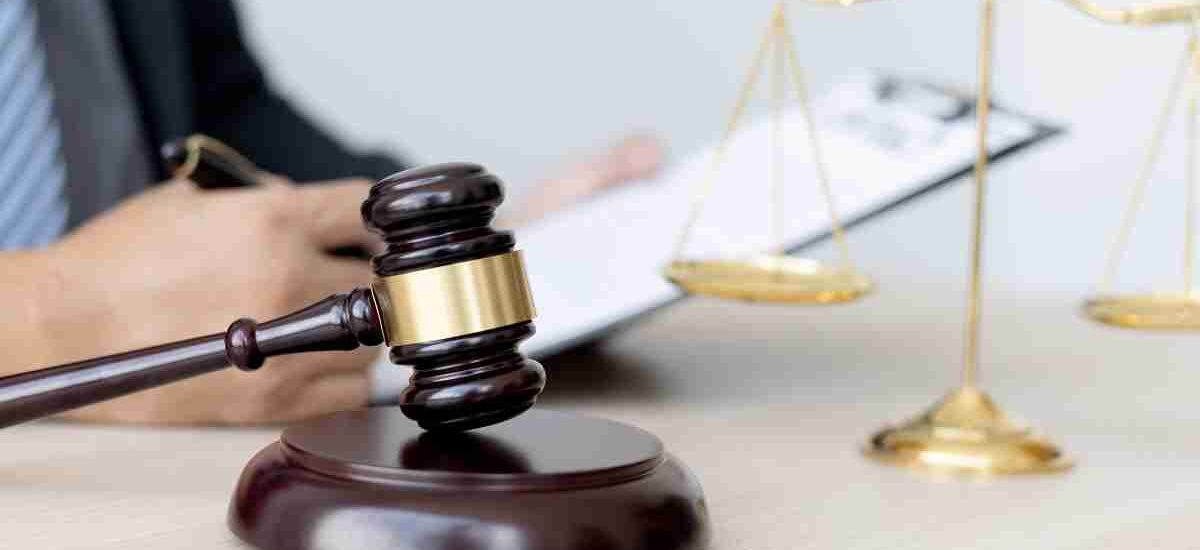In today’s world, we live more online than ever before. We shop online, bank online, work remotely, and even build relationships through digital spaces. But with so much of life happening in the virtual world, we must ask: Who governs the internet? Who protects us? And what happens when something goes wrong online?
That’s where cyber law comes in.
Cyber law, also known as Internet law or digital law, is the legal framework that governs the digital world. It addresses the rights, responsibilities, and boundaries for individuals and organizations in cyberspace. And like any other system of law, cyber law is based on certain foundational principles.
In this blog, we’ll walk you through the five basic principles of cyber law, explain what each one means in real-world terms, and explore why they matter in the digital age.
Let’s dive in.
1. Jurisdiction: Who Holds Power in Cyberspace?
One of the trickiest things about the internet is that it knows no borders.
Imagine a scenario: a person sitting in Canada hacks into a bank’s system in India. The victim is in India, the attacker is in Canada, and the data may be stored on servers in the U.S. So—which country’s laws apply? Who gets to arrest, try, or punish the perpetrator?
This is where the principle of jurisdiction comes into play.
What Is Jurisdiction in Cyber Law?
In simple terms, jurisdiction refers to a country or legal authority’s power to make decisions and enforce laws.
In cyber law, jurisdiction helps determine:
- Which laws apply to an online activity.
- Where a case can be filed and prosecuted.
- Who has the authority to investigate or take legal action.
Types of Jurisdiction in Cyber Law
- Territorial jurisdiction – Based on the location where the crime occurred.
- Personal jurisdiction – Based on the nationality or residence of the person involved.
- Subject-matter jurisdiction – Based on the type of offense (e.g., intellectual property, fraud, etc.)
Real-World Challenges
Because the internet is global, many crimes involve multiple jurisdictions. This leads to delays, conflicts, and confusion. Often, international cooperation becomes necessary, but countries have different laws, priorities, and protocols.
This is why international treaties like the Budapest Convention on Cybercrime exist—to encourage cooperation and standardization.
2. Data Protection and Privacy: Guarding Digital Lives
Every time you use a search engine, scroll through Instagram, or enter your credit card online, you leave a digital footprint. Your information—where you live, what you buy, who you talk to—is constantly being collected.
But who owns that data? What can companies do with it? And what rights do you have to keep it safe?
These questions are at the heart of the second principle: data protection and privacy.
Why This Principle Matters
In the digital world, data is currency. It can be used to profile people, target ads, manipulate behavior, or commit fraud.
Without strong laws, your personal data could be:
- Sold without your consent
- Used for political manipulation
- Stolen by hackers
- Abused by government surveillance
The Legal Backbone
Data protection laws vary by country, but their goal is the same: to protect personal data and give people control over their information.
Some well-known regulations include:
- GDPR (General Data Protection Regulation) in the European Union
- CCPA (California Consumer Privacy Act) in the U.S.
- India’s Digital Personal Data Protection Act (DPDP), 2023
Key Concepts in Data Privacy
- Consent: Organizations must obtain your clear permission to collect or use your data.
- Right to be forgotten: You can request that your data be deleted.
- Transparency: You should know what data is being collected and why.
- Security obligations: Companies must protect your data from breaches.
In essence, this principle ensures that your data is not someone else’s property—it’s yours.
3. Authentication and Integrity: Trust in the Digital World
Imagine you get an email from your bank asking for your password. You click the link, enter your details, and boom—you’ve just been scammed.
This example shows how crucial trust is in cyberspace. That’s where the principle of authentication and integrity comes in.
What Is Authentication in Cyber Law?
Authentication is the process of verifying identity. It helps ensure that:
- You are who you say you are.
- You’re dealing with the real person or website you think you are.
This includes everything from password protection and two-factor authentication to digital signatures and biometrics.
What About Integrity?
Integrity refers to the accuracy and reliability of data.
In cyber law, maintaining integrity means ensuring that:
- Data is not altered without authorization.
- Files and records are complete and uncorrupted.
- Transactions cannot be tampered with after the fact.
Examples of Real-Life Use
- E-signatures: These are legally recognized in many countries and require authentication to be valid.
- Blockchain technology: Built on the principle of data integrity and transparency.
- SSL certificates: Websites use them to prove they’re authentic and secure.
Without authentication and integrity, online systems become untrustworthy, leading to fraud, misinformation, and economic damage.
4. Cybercrime and Liability: When Things Go Wrong
No matter how advanced our systems become, people will always find ways to break the rules.
From phishing scams to ransomware attacks, cybercrime is a growing global problem. And just like crimes in the physical world, digital offenses must be punished and regulated.
That’s why the fourth principle of cyber law is about cybercrime and liability.
What Counts as Cybercrime?
Cybercrime includes a wide range of illegal activities, such as:
- Hacking or unauthorized access to systems
- Identity theft
- Online harassment or cyberbullying
- Phishing or scamming
- Distribution of child pornography
- Spreading malware or ransomware
- Denial-of-Service (DoS) attacks
Liability: Who’s Responsible?
Liability is about accountability. In cyber law, this includes:
- Holding individuals responsible for committing cybercrimes
- Making companies liable if they don’t protect user data
- Penalizing platforms that allow illegal content to spread
The Role of Governments and Law Enforcement
Many countries have created special cybercrime cells or digital forensics units to deal with online offenses.
International cooperation is also essential. Cybercriminals often exploit legal loopholes by operating across borders.
Laws continue to evolve to keep pace with new forms of cyberattacks, especially those using AI, deepfakes, or cryptocurrency.
5. Intellectual Property Rights (IPR): Protecting Digital Creativity
Let’s say you spend weeks designing a beautiful logo for your online business. Then, someone steals it, copies it, and uses it on their own site.
Unfair? Absolutely.
This is why cyber law protects intellectual property, and it’s the fifth core principle you need to know.
What Is Intellectual Property?
Intellectual property (IP) refers to creations of the mind, such as:
- Logos
- Software
- Music
- Videos
- Blog content
- Online courses
- Code
How Cyber Law Protects IP
The law helps digital creators by:
- Giving them exclusive rights to their work
- Allowing legal action if someone copies or misuses their content
- Providing licensing options to control how work is shared or sold
Key Concepts
- Copyright: Protects original works like art, music, and text.
- Trademark: Protects brand names, logos, and slogans.
- Patent: Protects inventions and technological processes.
- Digital Rights Management (DRM): Tools to control how digital content is used or accessed.
Online piracy, software duplication, and content theft are rampant. Without IP protection, innovation and creativity would suffer.
Cyber law ensures that creators get credit—and compensation—for their digital efforts.
Why These Five Principles Matter More Than Ever
It’s tempting to think of the internet as a lawless place, but in reality, cyber law is what makes digital life possible.
Whether you’re an entrepreneur, student, employee, or gamer, these principles shape how you interact online.
Let’s recap:
- Jurisdiction: Defines who has authority to resolve cyber disputes.
- Data Protection and Privacy: Shields your personal information from misuse.
- Authentication and Integrity: Builds trust through secure identities and unaltered data.
- Cybercrime and Liability: Holds bad actors accountable for digital wrongdoing.
- Intellectual Property Rights: Protects the creative work of digital thinkers and makers.
Together, these principles form the bedrock of internet safety, trust, and freedom.
The Human Side of Cyber Law
At its core, cyber law isn’t just about rules and regulations—it’s about people.
It’s about protecting a teenager from cyberbullying.
It’s about giving a small business owner confidence that their website is secure.
It’s about holding corporations accountable when they misuse your data.
It’s about ensuring that the online world is just as fair, ethical, and respectful as the one outside your screen.
Cyber law continues to evolve as technology evolves. New questions arise—How do we regulate AI? What happens with digital assets in the metaverse? Who owns the data generated by smart devices?
As we face these new frontiers, the five basic principles of cyber law will remain our compass—guiding us toward a safer, smarter, and more humane internet.
Final Thoughts
Understanding cyber law isn’t just for lawyers or IT professionals. It’s for anyone who uses the internet—which is practically everyone.
The more you know about how these principles work, the better you can protect yourself and your rights online. And the more you can contribute to a digital world that’s not only connected, but also just.
So next time you log in, scroll, or send an email, remember: there’s a legal backbone keeping that world safe, fair, and functional.
That backbone? It’s built on five essential principles.
Now that you know them, you’re not just a user—you’re an informed digital citizen.






